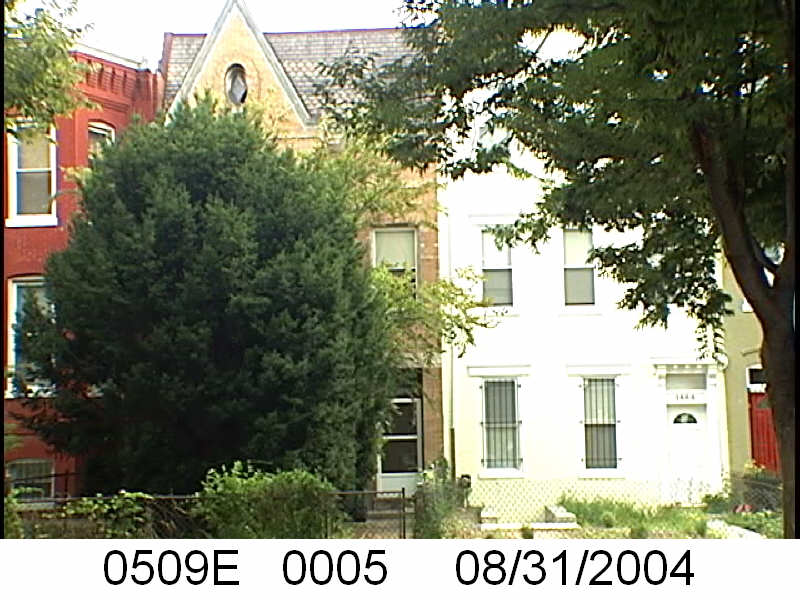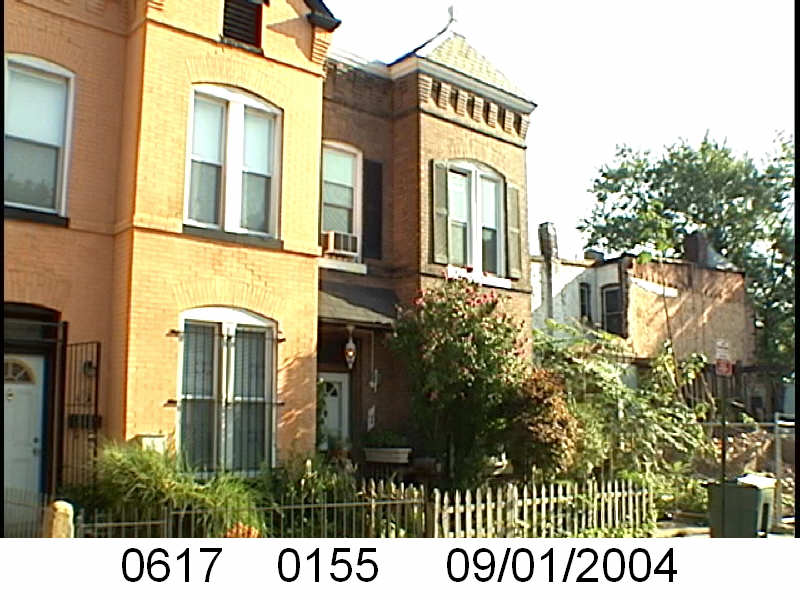As part of this series, I pick the name of a Black home owner from the 1920 census who lived in Truxton Circle, and try to track their life in this DC neighborhood. This is another sad story where someone loses their home.

One little note, I have the man’s name as Philip M. Murray from the 1920 census. But other records have him down as Peter M. Murray.
Let’s hit the land records and take a look at what happened.
The DC Recorder of Deeds’ online records start around 1921. The first record for 1645 NJ Ave NW (E0509 0020) is a trust, which means money was borrowed, between Peter M. and his wife Charlotte M. Murray and trustees on June 10, 1925 for $5500. The debt was paid or released and recorded on May 28, 1931.
This was followed by a release, the next month on July 3, 1925. A release is usually a document to show the debt was paid. This release was for a debt taken out on January 21, 1921.
May 21, 1931 the Murrays were forwarded 30 shares from the Oriental Building Association which amounted to $6000. In November 1932 there was a trustees deed filed. It appears the Murrays defaulted on their loan. The Oriental Building Association ran a notice in the Evening Star and so the Murray’s lost their home.
So who were the Murrays? Peter Marshall Murray (must be logged into AncestryLibrary.com for link to work) was born in 1888 in Houma, Louisiana to John L and Lavinia Murray. Charlotte was born Charlotte M. Wallace in 1885 South Carolina. They married in Washington, DC July 2, 1917 when she was 32 years old.
In 1920 they lived at 1645 New Jersey Ave NW with Charlotte’s mother, her 23 year old sister, and a live in domestic servant. Peter Murray was a physician, Charlotte and her sister Sametta were teachers. In July 1921, the Murrays had a son John Wallace/Walker Murray (d.2001).
According to the 1930 census the Murrays had departed DC and were living in a 7th Avenue apartment building in New York City. According to his World War II registration card Dr. Murray and his family lived at 2588 7th Ave Apartment 2P in central Harlem. So by the time they lost their DC house they were settled in New York.
One of the last records of him and Charlotte was a 1952 trip to the United Kingdom on the Queen Mary out of NYC to Southampton England. Dr. Murray died in December 1969 in New York. Charlotte died much later in 1982.

There is more information about Dr. Murray after he and his family left DC.
New York Academy of Medicine First Black Fellow- https://nyamcenterforhistory.org/2021/02/23/nyams-first-black-fellow/
The Second Annual Post Graduate Seminar for Physicians Nov 3-5, 1941 held at the Howard University College of Medicine- listed as a presenter https://www.nlm.nih.gov/exhibition/forallthepeople/img/698.pdf
Peter Marshall Murray, M.D. 1888-1969- https://www.ncbi.nlm.nih.gov/pmc/articles/PMC2611885/
UPDATE 9/8/2021- I strongly suspect there is a portrait of Dr. Murray at the National Portrait Gallery- https://npg.si.edu/object/npg_S_NPG.67.21 painted by Betsy Graves Reyneau.
Look’s like I got my self a famous man-The American Medical Association included him for Black History Month in a Facebook post.



 So it appears according to Wallace J. Broadas’ will, (probate in US District Court admin # 115,960) the property was left to Arvid Wallace Broadus, who was then not married. It says unmarried, but he’s divorced at this point and it doesn’t seem like he remarried. AND Evelyn Louise Shears (nee Broadus) and her husband Harry J. Shears, and Wallace’s sister Bessie Elizabeth Mack (nee Broadus), her husband William Mack and someone Bernice Occulane (aka Oculaine) Mynatt, who I believe might be his sister or other relative. Mynatt’s maiden name was Bernice O. Broadus before she married Bernard Ross Mynatt in DC in 1938.
So it appears according to Wallace J. Broadas’ will, (probate in US District Court admin # 115,960) the property was left to Arvid Wallace Broadus, who was then not married. It says unmarried, but he’s divorced at this point and it doesn’t seem like he remarried. AND Evelyn Louise Shears (nee Broadus) and her husband Harry J. Shears, and Wallace’s sister Bessie Elizabeth Mack (nee Broadus), her husband William Mack and someone Bernice Occulane (aka Oculaine) Mynatt, who I believe might be his sister or other relative. Mynatt’s maiden name was Bernice O. Broadus before she married Bernard Ross Mynatt in DC in 1938.






